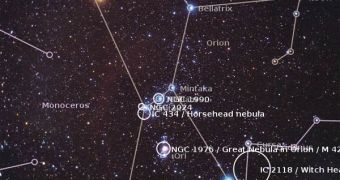A new method of identifying a star in the sky is being designed with the help of advanced software and search engines. The project was initiated by David Hogg, an astronomer at the New York University in the effort of creating Internet database from amateur photographs to find and name stars and point the region of the sky that was photographed.
People will be able to upload pictures of the sky and learn what celestial bodies are present in their picture. This way the site will greatly enhance its database, providing at the same time useful data for other scientists. Though the stars present on the night sky look stationary, they are actually slowly moving across the sky in a so-called 'proper motion', from our perspective. The branch of astronomy, studying a star's position and explaining how they got there, is astrometry.
Tracking a star's position and knowing its proper motion represents valuable data when trying to unlock the secrets behind the physics of a star cluster and the way they form. The best method available right now for tracking stars and the latest supernovas is by taking multiple pictures of the same celestial object over long periods of time, which involves tedious and expensive monitoring techniques.
There are a lot of astronomers scanning the night sky every minute, but most of the pictures they take are not well-documented, as they do not show the exact time when the photograph was taken or the location of the photographer at the respective time. With the help of the new site, Hogg wants to change that.
The uploaded pictures would suffer a selective process of first identifying the patterns formed by the stars to find what part of the sky the picture represents, after which all the stars are identified and it is decided whether they have been named or observed in the past.
The same process can be applied to find out the time at which the picture was taken, by reversing the proper motions of the stars and building catalogues of how stars looked like at different times. According to Hogg, the software which will be used to run the web page, is currently being tested on a simple web server, for its launch in the spring of next year. Already Hogg is worried that the service will not be able to work properly due to extremely heavy traffic, created by users trying to upload large digital images, so he has initiated discussions with several Internet companies that can host the website.
The service is expected to act mostly as a query for enthusiastic amateur astronomers.

 14 DAY TRIAL //
14 DAY TRIAL //